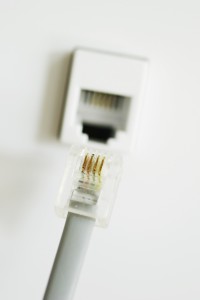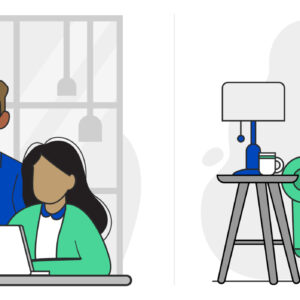What Is DSL?
Last Updated on October 24, 2018 by Karen Quach
A Digital Subscriber Line (DSL) is one of the most reliable and widely available Internet connections on the market. It’s fast and easy to set up, which means you can connect to the Internet and start surfing the web, emailing your friends, and streaming movies right away. If you’re looking for the best Internet for your needs, learn more about DSL and how to easily set up a connection.
What You Need to Knw About DSL.
There are many different types of DSL connections. However, there are two main types that are more common than others: Asymmetric Digital Subscriber Line (ADSL) and Symmetric Digital Subscriber Line (SDSL). ADSL is the most common type of DSL connection and can be delivered through the same phone cables that already exist for landline phones. An SDSL connection, on the other hand, may require a separate line.
Think of a telephone line as a multi-lane highway that information can travel along: when you make a phone call, you use a single lane to transmit data. Dial-up connections use this same lane to connect your computer to the Internet — while you’re connected to the Internet via dial-up, you cannot use the line for phone calls. An ADSL connection, on the other hand, uses the other lanes of the highway. Doing so not only allows more data to travel along the lane (making DSL a high-speed connection), but also allows you to use your landline for calls at the same time.
What Other Kinds of Connections Are There?
DSL and dial-up connections both use telephone networks that landlines use for phone calls, but other types of Internet connections use different methods. Cable Internet connections use the coaxial networks that cable TV providers use to transmit data, while satellite Internet uses a satellite dish to connect to the Internet, even from places where a landline or cable TV is not available. Fiber-optic Internet transmits data as light waves through glass fibers, but this technology is relatively new and is unavailable or prohibitively expensive in many areas.
 DSL connections are significantly faster than dial-up, tend to be faster than satellite Internet, and are comparable to cable Internet. In general, you can expect speeds around 20 Mbps for downloading and 3 Mbps for uploading.
DSL connections are significantly faster than dial-up, tend to be faster than satellite Internet, and are comparable to cable Internet. In general, you can expect speeds around 20 Mbps for downloading and 3 Mbps for uploading.
What Are the Advantages of DSL?
Using DSL has some serious advantages over other types of Internet connections.
- DSL connections are specific to your phone line, so speed isn’t affected by peak hours (unlike cable, where every cable subscriber in an area shares the connection).
- DSL uses an existing land line, so it doesn’t require any intense hardware installation or renovations.
- DSL doesn’t interrupt phone service and is constantly connected.
What Are the Disadvantages of DSL?
Before installing any Internet, you should consider the disadvantages as well.
- Data transmission over phone lines gets slower the farther away you are from the provider or from a repeater. If you live in a rural area, DSL may be slow or unavailable.
- If you have lots of individuals using the Internet, some DSL connections might have difficulty handling the high bandwidth use.
- DSL is not ideal for businesses with high bandwidth needs.
What Do I Need to Get started?
Setting up a DSL network is easy, requiring little time and no specialized knowledge. All you need is a DSL modem, an Ethernet cable, DSL filters, and a router (or a combined modem and router). Your Internet Service Provider (ISP) will likely supply everything you need to get started, though you have the option to use your own modem instead of renting or buying one.
How Do I Set Up My DSL Connection?
Most providers have technicians available to set up your Internet connection for you. If you want to set up your DSL connection yourself, however, the process is simple.
- Turn off your computer before beginning the installation process.
- Attach DSL filters to any landline phones in your house. These filters plug directly into the phone jack and keep the DSL signal, which is being sent through your phone line, from causing static on any line with a phone on it.
- Once you connect the filter to the phone jack, simply plug the line from the phone back into the other end of the filter.
- Plug your DSL modem into an electrical outlet using the provided power supply cord. Your modem communicates with your ISP’s network, and you need the type of modem that works with your ISP’s infrastructure. Make sure you have a DSL modem, not a cable or satellite modem.
- Use a phone cord to connect the WAN (wide area network) port on your modem to an un-filtered phone jack. If you have a phone connected to every jack in the house, you can use a special filter that has two connections on it: one filtered connection for the telephone and one unfiltered connection for the modem. Be sure to hook up the modem to the unfiltered connection, or your Internet won’t work.
- If you have a combined modem and router, plug an Ethernet cable into the LAN (local area network) port on the modem/router and a port on your computer.
- If you have a separate modem and router, plug the router into an electrical outlet, then use the Ethernet cable to connect the LAN port on the modem to the WAN port on the router. Use another Ethernet cable to connect the LAN port on the router and a port on your computer.
- If you have a wireless router, you do not need a second Ethernet cable to connect the router to your computer. Instead, you can use the default password on the bottom of the router to connect wirelessly.
- Turn your computer on and follow the instructions on screen to set up your network.
If you’re looking for Internet that is reliable, fast, and easy, DSL may be your best option. Check out CenturyLink’s High-Speed Internet and Internet home service bundle options by calling 855-640-4510.







